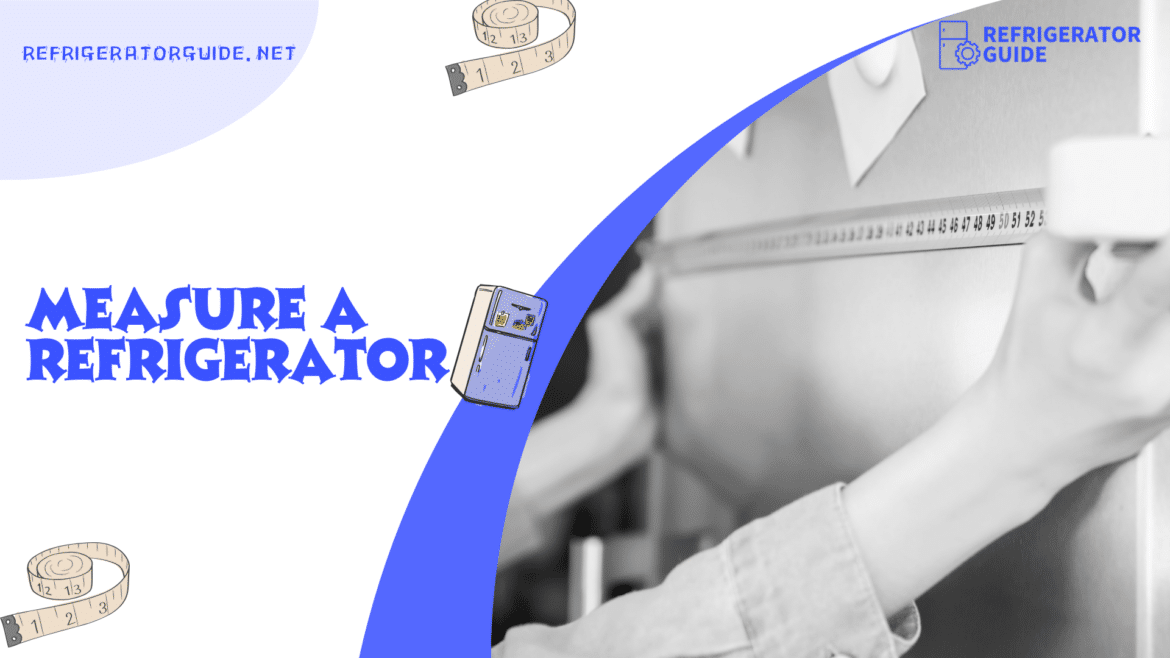Table of Contents
Are you looking for the right fridge size to up the game of your kitchen space? You must have to measure a refrigerator accurately for that. Fridge is unarguably the most important electric appliance for daily use. To measure a refrigerator, first determine the dimensions of the area it will occupy in terms of height, width, and depth. Make sure the refrigerator has adequate space around it for good ventilation and simple door opening. The size of a standard refrigerator can vary, so confirm the manufacturer’s specifications. Additionally, give a minimum of one inch of space for ventilation in the rear and on each side. Accurate measurement guarantees a proper fit and avoids installation problems. Let us first see why accurate measurements are necessary for the right fridge size.
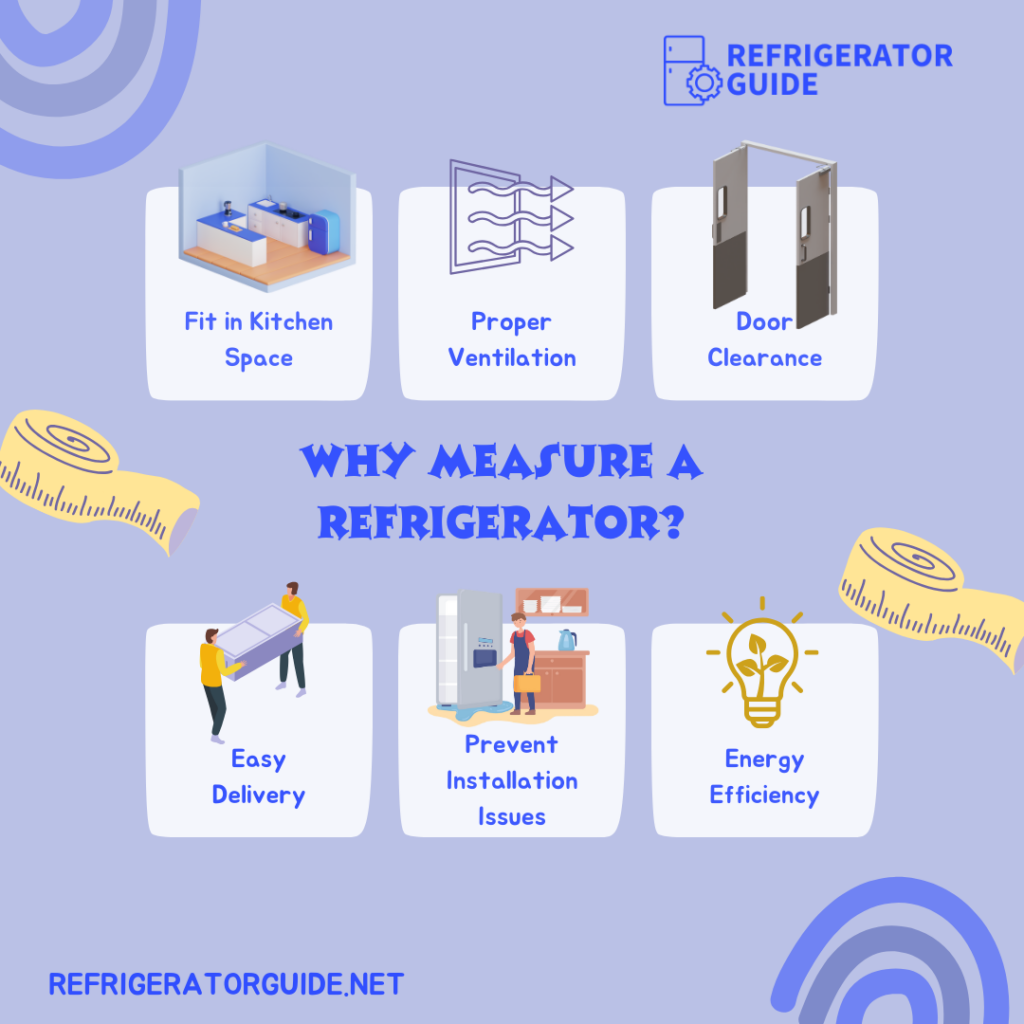
Why Accurate Measurements Are Important?
As you all know why, we use refrigerators at home to cool and preserve our fruits & vegetables. Precise specifications guarantee that your refrigerator functions well and fits into your kitchen as intended. Measuring the proper width, height, and depth aids in avoiding problems with delivery, door clearance, and installation. Planning is made easier when one is aware of refrigerator sizes and dimensions, such as the typical refrigerator’s width of 30 to 36 inches and height of 66 to 70 inches.
- Measure the refrigerator and the area in your kitchen.
- Make sure doors have adequate room to open completely.
- During delivery, make sure it fits through entrances.
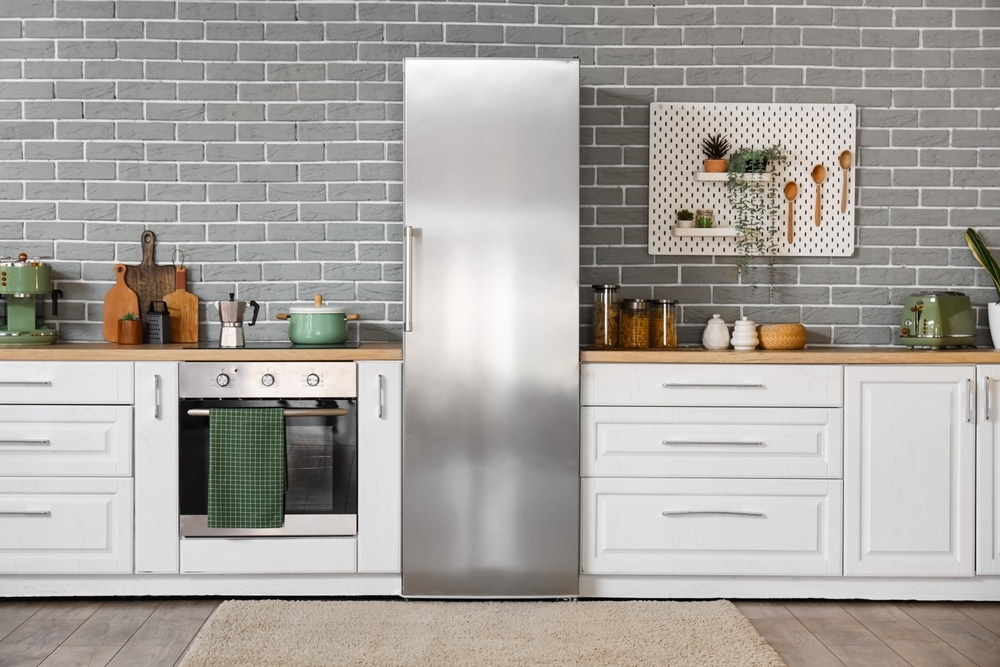
A Guide to Measure a Refrigerator
Let us learn the proper way to measure a fridge using steps.
Measure the Width
The first and foremost thing is to measure the width of your kitchen appliance.
- Use a tape measure to get the width of the refrigerator from side to side.
- Write down the widest points, including the handles and hinges if they extend outwards.
Measure the Height
Next up, you need to measure the height.
- Measure from the floor to the top of the refrigerator, including any hinges.
- For counter-depth refrigerators, check that the height allows for overhead cabinets.
Measure the Depth
The depth is crucial for easy transportation of your refrigerator through the kitchen door.
- Measure from the back of the refrigerator to the front, excluding and then including the door handle.
- Consider whether the refrigerator doors will swing open freely without hitting any walls.
Measure for Kitchen Space
Make sure your kitchen space look good, spacious as well as aesthetic once your fridge is inside.
- Leave extra room behind and above the refrigerator for ventilation, generally around 1 to 2 inches.
- Ensure there is ample space in front of the refrigerator to fully open the doors.
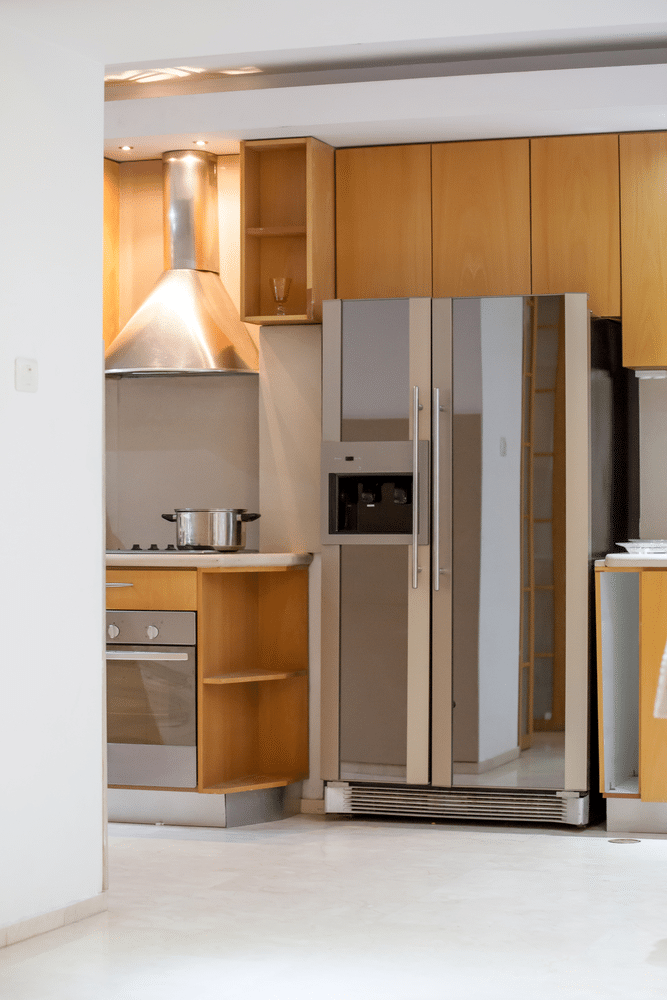
What Is a Standard Size Refrigerator?
The standard size of a refrigerator varies based on the type. Knowing the typical sizes helps ensure that the fridge fits perfectly into your kitchen layout.
- Width: Most standard refrigerators range from 28 to 36 inches wide.
- Height: The average height of a fridge is between 62 and 72 inches, but some models may be taller.
- Depth: Standard refrigerator depth is between 28 and 34 inches, excluding door handles.
- Cubic Feet: For standard refrigerators, the interior space typically ranges from 20 to 28 cubic feet.
Counter Depth vs. Standard Depth Refrigerators
Here is a look at the difference between a counter depth and the standard one with respect to the measurement.
Counter Depth
A counter-depth refrigerator sits flush with kitchen cabinets, providing a streamlined look.
- Dimensions: These typically measure 24 to 30 inches in depth.
Standard Depth
Standard-depth refrigerators extend beyond the cabinets.
- Dimensions: These range from 28 to 34 inches in depth, allowing for more internal storage.
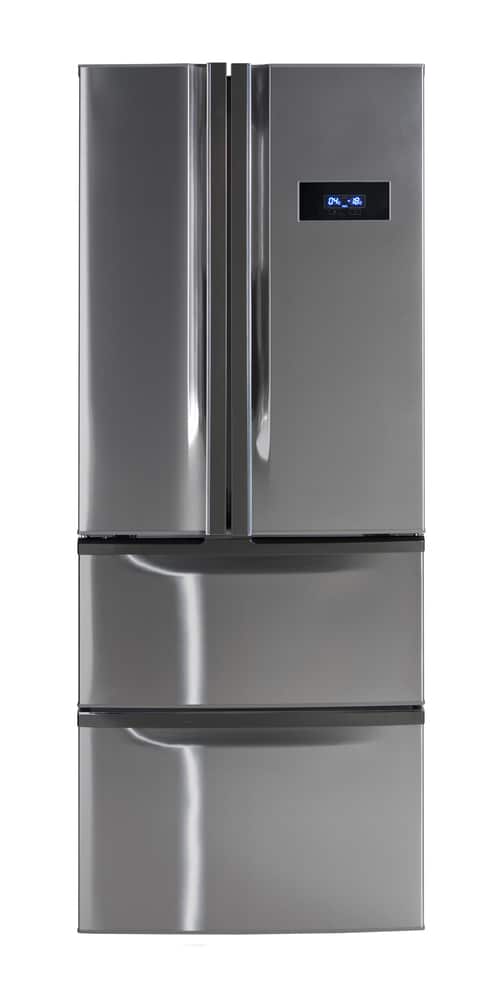
Refrigerator Features by Model
The measurements of all the refrigerators also depend upon their specific types or models.
Bottom Freezer
- Popular for its convenient access to fresh foods.
- Requires slightly more clearance in front of the fridge for the door to swing open.
Side-by-Side
- Divides the fridge and freezer vertically.
- Good for narrow kitchen spaces as the doors are smaller.
French Door
- A French refrigerator offers a spacious fridge compartment with double doors.
- Requires a wide kitchen space to accommodate both doors when open.

Final Thoughts
To sum up, precise measurement is crucial to guaranteeing a refrigerator fits neatly into your kitchen and functions well. To prevent any sizing problems, take into account the height, breadth, depth, and kitchen space while figuring out how to measure a refrigerator. Standard refrigerators are normally between 28 and 36 inches wide and between 66 and 70 inches tall, though exact sizes might vary.
In conclusion, selecting the appropriate refrigerator for your needs also requires knowing the differences between counter-depth and standard-depth refrigerators as well as model-specific features like side-by-side or bottom-freezer options.
MEASURE ALL THE WAY FOR A PERFECT KITCHEN FIT!
